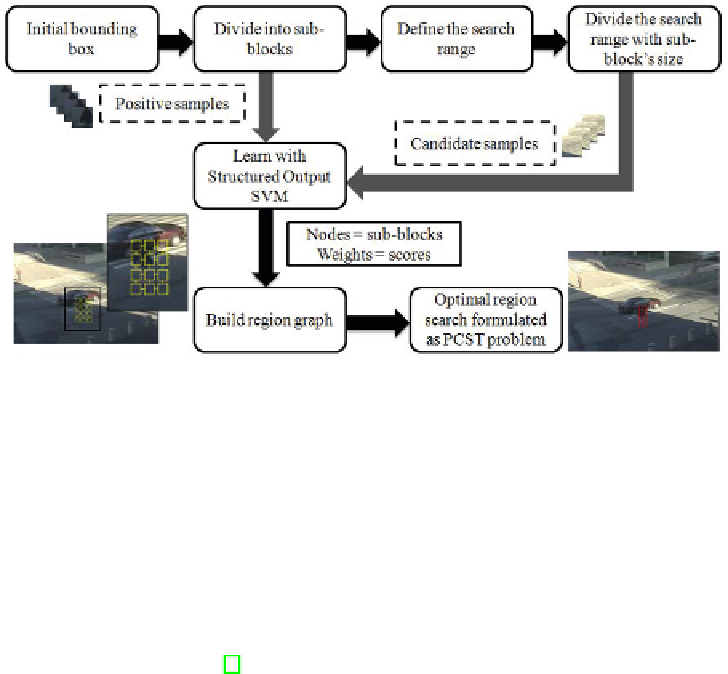Information Technology Reference
In-Depth Information
Fig. 1.
Flowchart of our proposed structured output kernels
2 The Algorithms
In this section, we briefly describe the proposed object tracking method which
employs structured output kernel function. The key ideas of our proposed method
is the employment of the object detection with structured output kernels.
Given an initial bounding box, we divide the bounding box into sub-blocks
with a predefined size. Next, we extract the features from each sub-block by
using Haar-like features [8]. Then we learn all of those features with structured
output Support Vector Machine (SVM). We adapt LaRank classifier [12] as
structured output SVM method. And then, we define our search range to search
the candidates samples based on the search radius
r
from the center position
of each sub-block size. After that, we divide the search range with the same
size as a sub-block. The positive samples for classifier are obtained from the
initial bounding box in the first frame while the negative samples are obtained
randomly in the search range, except for the positive sample area. And then, we
build a region graph by using sub-blocks as nodes and scores from LaRank [12]
classifier as weights for each node.
2.1 Structured Output SVM
Unlike regular SVM which consider only binary labels as the output prediction,
structured output SVM can predict more complex object
e.g
images, sequences,
strings, trees, lattices, or graphs. Structured output SVM uses structured learn-
ing which learns to predict outputs that are not simple binary labels. By using
structured learning, we can modeling the relationship between the different out-
put inside the output space, so we can learn classifier that makes better use of
training data instead of using binary output. In the context of object tracking,


Search WWH ::

Custom Search